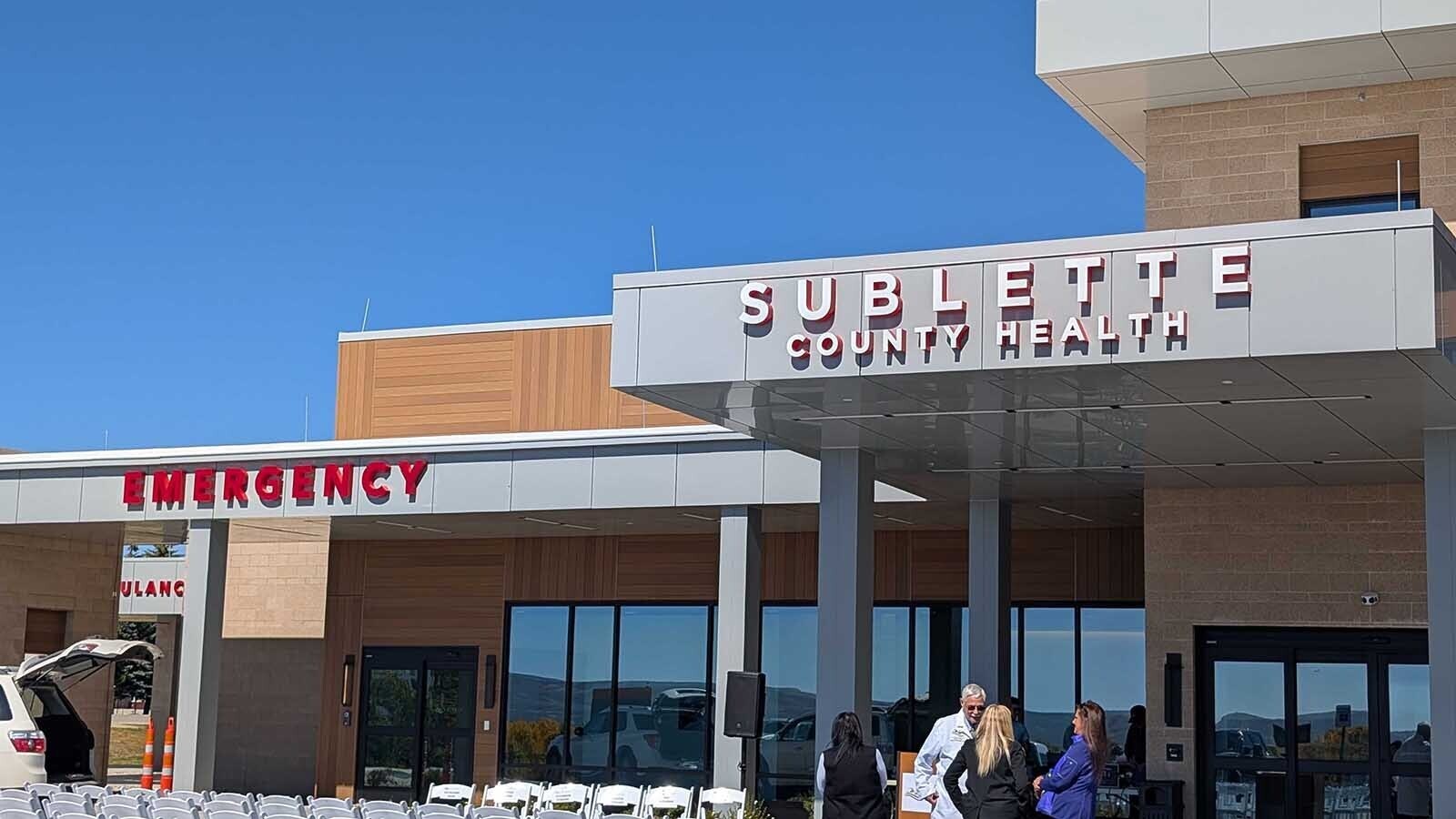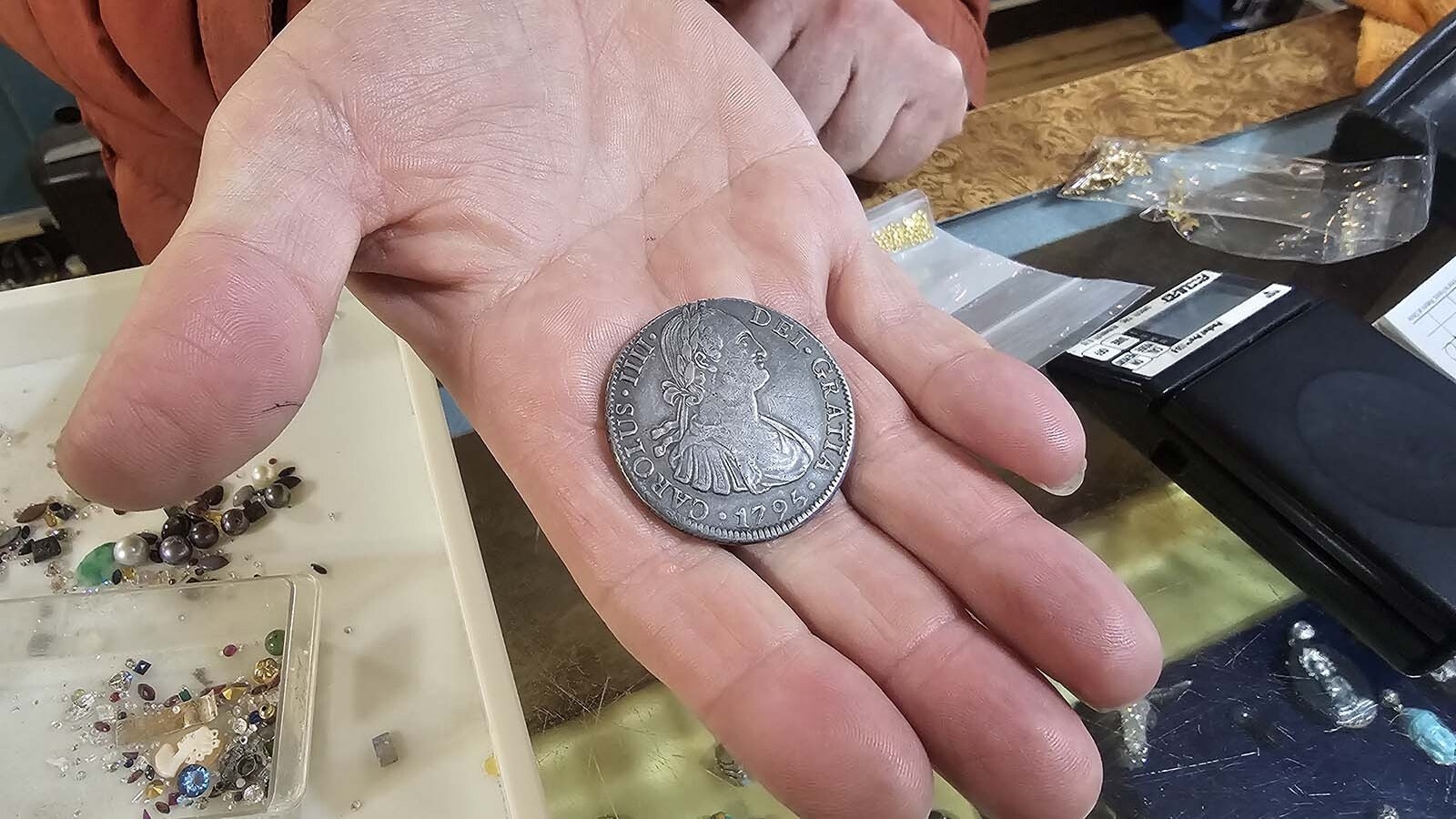The Wyoming Department of Transportation has been leveraging the rapidly evolving technology available to the agency to improve safety for everyone driving through Cowboy State.
It’s used this vehicle-to-everything (V2X) technology to become a national model that’s being rolled out around the country.
The U.S. Department of Transportation awarded the Utah Department of Transportation a $20 million grant to “connect the West” with V2X tech this summer. The money will be used to connect drivers with alerts for everything from traffic jams to adverse weather to seasonal road closures.
Called “Connect the West,” the grant also allows Utah to increase its V2X connectivity with Wyoming and Colorado.
This isn’t new to Wyoming, which has been quietly pioneering V2X technology for nearly a decade.
The U.S. Department of Transportation “selected Wyoming to participate in the first pilot of V2X technology in 2015,” said Vince Garcia, WYDOT’s GIS/ITS program manager. “I think we've taken it further than anybody else, and a lot of states will be looking at Wyoming once this becomes more mainstream.”
While WYDOT and federal transportation officials are excited about the potential for V2X, critics say it poses serious privacy concerns and summons fears of Big Brother-type of government surveillance and intrusion.
“While V2X technology is designed to protect privacy by using random identifiers and limiting data sharing, certain applications may necessitate disclosing personal information,” according to an essay on why privacy is a V2X concern by the transportation website Intertraffic. “Overall, the challenge lies in balancing the benefits of V2X technology with the need to safeguard individual privacy, considering the diverse range of attitudes toward data disclosure.”
Vehicle To Everything
V2X technology leverages smartphones and heads-up displays in modern vehicles to deliver vital information to drivers in real time.
Going beyond just sending alerts, it allows vehicles to communicate with each other to enhance driver safety and improve traffic flow.
“A car with a connected vehicle radio broadcasts its position, heading and speed 10 times a second,” Garcia said. “Any other cars in the traffic stream with similar equipment can pick up that message. With intelligence built into the vehicle or the onboard units, drivers and vehicles can get information to avoid collisions, be notified of weather conditions, get forward collision and curve warnings, and more.”
V2X units installed alongside roads and highways allow state agencies to relay information directly to every vehicle that passes.
The potential applications of V2X technology could revolutionize travel throughout Wyoming and the United States. With V2X technology, WYDOT can send a signal warning Interstate 80 drivers of a closure or slowdown several miles before they reach it and provide alternate routes to avoid the hazard.
WYDOT can also relay the same information to Google, Apple and other navigation companies so the warning and rerouting automatically appear for anyone using a navigation app.
“I think this is the next great advance that can be made in the safety of the traffic stream,” Garcia said.
Wyoming At The Front
In 2015, the U.S. DOT launched the Connected Vehicle Pilot Deployment Program to demonstrate the effectiveness of V2X technology in various regions around America.
The agencies selected to pioneer that future were the New York City Department of Transportation, the Tampa Bay/Hillsborough Expressway Authority, and WYDOT.
“Kate Hartman, the CV Pilot Deployment Program manager with UDOT, is leading all the pilot programs, and we couldn’t have done it without her leadership,” Garcia said. “We were given the opportunity to demonstrate this technology, and I'm quite happy with the way this is going forward.”
Garcia said WYDOT has been keeping meticulous records of its process. This will provide a template for the rest of the U.S. to follow when it begins implementing V2X technology in cities on highways nationwide.
“It's going to be a benefit for all the states,” he said. “We've made a concerted effort to document everything we're doing so others can use Wyoming as a model. That’s been our goal since day one, and we’re really seeing the fruits of that effort.”

Travel Wyoming
Not everyone is a fan of the hyperconnectivity V2X represents, especially those concerned about it being used by government and corporations to surveil people. It’s a privacy issue for many and one of the main roadblocks for the tech as it grows and spreads.
Utah and Colorado plan to use Connect the West money to add more V2X technology infrastructure to their roadways, including sensors and cameras at intersections and highways. The technology will push critical information to smartphones and the onboard heads-up displays in vehicles capable of communicating via V2X.
Meanwhile, Garcia said all the V2X infrastructure Wyoming now needs is already installed along the entire expanse of I-80. WYDOT focused on getting information directly to people’s smartphones and handsets.
“We’ve pretty much instrumented everything along I-80,” he said. “We are pushing critical information to drivers on every state highway, but we're doing it through that situation data exchange. We're not putting out additional equipment to push directly a vehicle’s onboard units, but we think it will be very effective to get it into people's handsets.”
Garcia explained that only recently built models, within the last decade or so, can receive V2X updates directly to their onboard computers, and those vehicles aren’t as common on Wyoming’s highways.
Smartphones will suffice for now, but once the technology becomes more universal, the state will upgrade the infrastructure to communicate with vehicles directly.
WYDOT already prides itself on the speed and efficiency of its communication through the Wyoming 511 app and the state’s interactive travel map. Garcia said V2X is a blindingly fast method of communication and could become the primary source of up-to-date road conditions in the Cowboy State.
“We take great pride in how we provide information to the public,” he said. “We try to make it as accurate and timely as possible, but there's no way we'll ever have nanosecond capability. With V2X technology, a vehicle transmits its information ten times a second. We’re never going to be able to get information out that quickly, but V2X already can.”
Free And Safe
Using V2X technology won’t cost Wyoming drivers anything. In fact, WYDOT Public Affairs Officer Doug McGee said it will ultimately save Wyomingites a lot of time and possibly their lives.
“The main goals of this technology are to save lives and reduce crashes and closures,” he said. “We want to reduce closures, and crashes are one of the main sources of closures. V2X will certainly reduce those fatalities and increase the open time of our roadways.”
For anyone wary of their vehicle transmitting data to roadside sensors and other vehicles and alerts appearing directly on their smartphones, Garcia said the information collected and communicated is “completely transparent” to WYDOT and any other agency using it.
“We are pushing information, not grabbing it,” he said. “If there is a road closure, we get to the navigation companies so that they can get it to the driver as quickly as possible. But once it goes to the third-party provider, it’s transparent to us. We will never know who’s using what.”
Garcia explained that smartphones constantly push data about location, speed and other factors to third-party companies. V2X technology allows WYDOT to leverage this digital exchange to benefit drivers with immediate updates on road conditions.
“I don't know that drivers will notice things that are much different,” he said. “If you're using Google, Apple or Waze and it reroutes you because of a crash or closure, I don't know that you necessarily know what's behind that. That’s WYDOT getting those updates to those navigation companies using V2X technology.”
Country Roads Don’t Take You Home
The future is now with V2X technology, but it’s not infallible.
When highways close, navigation apps often reroute drivers onto county roads that might be hazardous, in disrepair, completely undrivable or even not there. This is a national issue, but particularly important for Wyoming where there’s a lot of nothing between stops on the roads.
“When a road or highway is s closed, navigation apps look for the next available route,” Garcia said. “Because they don't have probes on some of our county roads, they assume certain roads are open in the winter, which can be treacherous. If a person is driving on I-80 in winter and WYDOT, they might send vehicles down county roads that are not maintained.”
The state working with Wyoming’s counties to evaluate the status of the state’s county roads. That evaluation will eventually be programmed into navigation apps so drivers are only rerouted to safe, established county roads.
“We’re really working to make a better situation for drivers,” he said. “That's not uniquely Wyoming, and certainly not unique to winter, but it's important to every county, city, and state.”
Andrew Rossi can be reached at arossi@cowboystatedaily.com.





